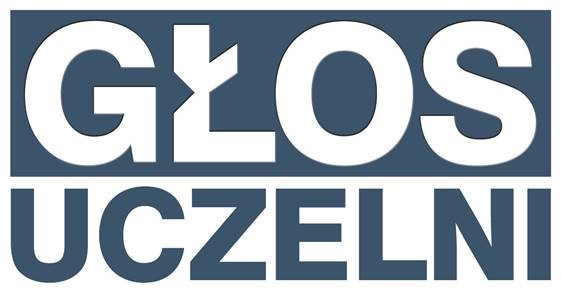
Research papers of the month – October 2023
We present the highest-score research papers of October 2023. These papers have ben published in journals with the highest Ministerial score – 200 points.
Aspicilia lutzoniana Rodr. Flakus, Szczepańska & Flakus, sp. nov
P.W. Crous; E.R. Osieck; R.G. Shivas; Y.P. Tan; S.L. Bishop-Hurley; F. Esteve-Raventós; E. Larsson; J.J. Luangsa-Ard; F. Pancorbo; S. Balashov; I.G. Baseia; T. Boekhout; S. Chandranayaka; D.A. Cowan; R.H.S.F. Cruz; P. Czachura; S. De la Peña-Lastra; F. Dovana; B. Drury; J. Fell; A. Flakus; R. Fotedar; Ž. Jurjević; A. Kolecka; J. Mack; G. Maggs-Kölling; S. Mahadevakumar; A. Mateos; S. Mongkolsamrit; W. Noisripoom; M. Plaza; D.P. Overy; M. Piątek; M. Sandoval-Denis; J. Vauras; M.J. Wingfield; S.E. Abell; A. Ahmadpour; A. Akulov; F. Alavi; Z. Alavi; A. Altés; P. Alvarado; G. Anand; N. Ashtekar; B. Assyov; G. Banc-Prandi; K.D. Barbosa; G.G. Barreto; J.M. Bellanger; J.L. Bezerra; D.J. Bhat; P. Bilański; T. Bose; F. Bozok; J. Chaves; D.H. Costa-Rezende; C. Danteswari; V. Darmostuk; G. Delgado; S. Denman; A. Eichmeier; J. Etayo; G. Eyssartier; S. Faulwetter; K.G.G. Ganga; Y. Ghosta; J. Goh; J. S. Góis; D. Gramaje; L. Granit; M. Groenewald; G. Gulden; L.F.P. Gusmão; A. Hammerbacher; Z. Heidarian; N. Hywel-Jones; R. Jankowiak; M. Kaliyaperumal; O. Kaygusuz; K. Kezo; A. Khonsanit; S. Kumar; C.H. Kuo; T. Læssøe; K.P.D. Latha; M. Loizides; S.M. Luo; J.G. Maciá-Vicente; P. Manimohan; P.A.S. Marbach; P. Marinho; T.S. Marney; G. Marques; M.P. Martin; A.N. Miller; F. Mondello; G. Moreno; K.T. Mufeeda; H.Y. Mun; T. Nau; T. Nkomo; A. Okrasińska; J.P.A.F. Oliveira; R.L. Oliveira; D.A. Ortiz; J. Pawłowska; M.À. Pérez-De-Gregorio; A.R. Podile; A. Portugal; N. Privitera; K.C. Rajeshkumar; I. Rauf; B. Rian; A. Rigueiro-Rodríguez; G.F. Rivas-Torres; Pamela Rodriguez-Flakus; M. Romero-Gordillo; I. Saar; M. Saba; C.D. Santos; P.V.S.R.N. Sarma; J.L. Siquier; S. Sleiman; M. Spetik; K.R. Sridhar; M. Stryjak-Bogacka; Katarzyna Szczepańska; H. Taşkın; D.S. Tennakoon; D. Thanakitpipattana; J. Trovão; I. Türkekul; A.L. van Iperen; P. van 't Hof; G. Vasquez; C.M. Visagie; B.D. Wingfield; P.T.W. Wong; W. X. Yang; M. Yarar; O. Yarden; N. Yilmaz; N. Zhang; Y.N. Zhu; J.Z. Groenewald
Persoonia
Ministerial score = 200.0
Journal Impact Factor (2023) = 9.1 (Q1)
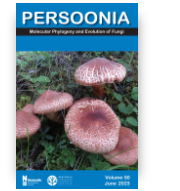 Novel species of fungi described in this study include those from various countries as follows: Australia, Aschersonia mackerrasiae on whitefly, Cladosporium corticola on bark of Melaleuca quinquenervia, Penicillium nudgee from soil under Melaleuca quinquenervia, Pseudocercospora blackwoodiae on leaf spot of Persoonia falcata, and Pseudocercospora dalyelliae on leaf spot of Senna alata. Bolivia, Aspicilia lutzoniana on fully submersed siliceous schist in high-mountain streams, and Niesslia parviseta on the lower part and apothecial discs of Erioderma barbellatum onatwig. Brazil, Cyathus bonsai on decaying wood, Geastrum albofibrosum from moist soil with leaf litter, Laetiporus pratigiensis on a trunk of a living unknown hardwood tree species, and Scytalidium synnematicum on dead twigs of unidentified plant. Bulgaria, Amanita abscondita on sandy soil in a plantation of Quercus suber. Canada, Penicillium acericola on dead bark of Acer saccharum, and Penicillium corticola on dead bark of Acer saccharum. China, Colletotrichum qingyuanense on fruit lesion of Capsicum annuum. Denmark, Helminthosphaeria leptospora on corticioid Neohypochnicium cremicolor. Ecuador (Galapagos), Phaeosphaeria scalesiae on Scalesia sp. Finland, Inocybe jacobssonii on calcareouss oils in dry forests and park habitats. France, Cortinarius rufomyrrheus on sandy soil under Pinus pinaster, and Periconia neominutissima on leaves of Poaceae. India, Coprinopsis fragilis on decaying bark of logs, Filoboletus keralensis on unidentified woody substrate, Penicillium sankaranii from soil, Physisporinus tamilnaduensis on the trunk of Azadirachta indica, and Poronia nagaraholensis on elephant dung. Iran, Neosetophoma fic on infected leaves of Ficus elastica. Israel, Cnidariophoma eilatica (incl. Cnidariophoma gen. nov.) from Stylophora pistillata. Italy, Lyophyllum obscurum on acidic soil. Namibia, Aureobasidium faidherbiae on dead leaf of Faidherbia albida, and Aureobasidium welwitschiae on dead leaves of Welwitschia mirabilis. Netherlands, Gaeumannomycella caricigena on dead culms of Carex elongata, Houtenomyces caricicola (incl. Houtenomyces gen. nov.) on culms of Carex disticha, Neodacampia ulmea (incl. Neodacampia gen. nov.) on branch of Ulmus laevis, Niesslia phragmiticola on dead standing culms of Phragmites australis, Pseudopyricularia caricicola on culms of Carex disticha, and Rhodoveronaea nieuwwulvenica on dead bamboo sticks. Norway, Arrhenia similis half-buried and moss-covered pieces of rotting wood in grass-grownpath. Pakistan, Mallocybe ahmadii on soil. Poland, Beskidomyces laricis (incl. Beskidomyces gen. nov.) from resin of Larix decidua ssp. polonica, Lapidomyces epipinicola from sooty mould community on Pinus nigra, and Leptographium granulatum from a gallery of Dendroctonus micans on Picea abies. Portugal, Geoglossum azoricum on mossy areas of laurel forest areas planted with Cryptomeria japonica, and Lunasporangiospora lusitanica from a biofilm covering a bio deteriorated limestone wall. Qatar, Alternaria halotolerans from hypersaline sea water, and Alternaria qatarensis from water sample collected from hypersaline lagoon. South Africa, Alfaria thamnochorti on culm of Thamnochortus fraternus, Knufia aloeicola on Aloe gariepensis, Muriseptatomyces restionacearum (incl.Muriseptatomyces gen. nov.) on culms of Restionaceae, Neocladosporium arctotis on nest of cases of bagworm moths(Lepidoptera, Psychidae) on Arctotis auriculata, Neodevriesia scadoxi on leaves of Scadoxus puniceus, Paraloratospora schoenoplecti on stems of Schoenoplectus lacustris, Tulasnella epidendrea from the roots of Epidendrum × obrienianum, and Xenoidriella cinnamomi (incl. Xenoidriella gen. nov.) on leaf of Cinnamomum camphora. South Korea, Lemonniera fraxinea on decaying leaves of Fraxinus sp. frompond. Spain, Atheniella lauri on the bark of fallen trees of Laurus nobilis, Halocryptovalsa endophytica from surface-sterilised, asymptomatic roots of Salicornia patula, Inocybe amygdaliolens on soil in mixed forest, Inocybe pityusarum on calcareous soil in mixed forest, Inocybe roseobulbipes on acidic soils, Neonectria borealis from roots of Vitis berlandieri × Vitis rupestris, Sympoventuria eucalyptorum on leaves of Eucalyptus sp., and Tuber conchae fromsoil. Sweden, Inocybe bidumensis on calcareous soil. Thailand, Cordyceps sandindaengensis on Lepidoptera pupa, buried in soil, Ophiocordyceps kuchinaraiensis on Coleoptera larva, buried in soil, and Samsoniella winandae on Lepidoptera pupa, buriedinsoil. Taiwan region (China), Neophaeosphaeria livistonae on dead leaf of Livistona rotundifolia. Türkiye, Melanogaster anatolicus on clay loamy soils. UK, Basingstokeomyces allii (incl. Basingstokeomyces gen. nov.) on leaves of Allium schoenoprasum. Ukraine, Xenosphaeropsis corni on recently dead stem of Cornus alba. USA, Nothotrichosporon aquaticum (incl. Nothotrichosporon gen. nov.) from water, and Periconia philadelphiana from swab of coil surface. Morphological and culture characteristics for these new taxa are supported by DNA barcodes.
Novel species of fungi described in this study include those from various countries as follows: Australia, Aschersonia mackerrasiae on whitefly, Cladosporium corticola on bark of Melaleuca quinquenervia, Penicillium nudgee from soil under Melaleuca quinquenervia, Pseudocercospora blackwoodiae on leaf spot of Persoonia falcata, and Pseudocercospora dalyelliae on leaf spot of Senna alata. Bolivia, Aspicilia lutzoniana on fully submersed siliceous schist in high-mountain streams, and Niesslia parviseta on the lower part and apothecial discs of Erioderma barbellatum onatwig. Brazil, Cyathus bonsai on decaying wood, Geastrum albofibrosum from moist soil with leaf litter, Laetiporus pratigiensis on a trunk of a living unknown hardwood tree species, and Scytalidium synnematicum on dead twigs of unidentified plant. Bulgaria, Amanita abscondita on sandy soil in a plantation of Quercus suber. Canada, Penicillium acericola on dead bark of Acer saccharum, and Penicillium corticola on dead bark of Acer saccharum. China, Colletotrichum qingyuanense on fruit lesion of Capsicum annuum. Denmark, Helminthosphaeria leptospora on corticioid Neohypochnicium cremicolor. Ecuador (Galapagos), Phaeosphaeria scalesiae on Scalesia sp. Finland, Inocybe jacobssonii on calcareouss oils in dry forests and park habitats. France, Cortinarius rufomyrrheus on sandy soil under Pinus pinaster, and Periconia neominutissima on leaves of Poaceae. India, Coprinopsis fragilis on decaying bark of logs, Filoboletus keralensis on unidentified woody substrate, Penicillium sankaranii from soil, Physisporinus tamilnaduensis on the trunk of Azadirachta indica, and Poronia nagaraholensis on elephant dung. Iran, Neosetophoma fic on infected leaves of Ficus elastica. Israel, Cnidariophoma eilatica (incl. Cnidariophoma gen. nov.) from Stylophora pistillata. Italy, Lyophyllum obscurum on acidic soil. Namibia, Aureobasidium faidherbiae on dead leaf of Faidherbia albida, and Aureobasidium welwitschiae on dead leaves of Welwitschia mirabilis. Netherlands, Gaeumannomycella caricigena on dead culms of Carex elongata, Houtenomyces caricicola (incl. Houtenomyces gen. nov.) on culms of Carex disticha, Neodacampia ulmea (incl. Neodacampia gen. nov.) on branch of Ulmus laevis, Niesslia phragmiticola on dead standing culms of Phragmites australis, Pseudopyricularia caricicola on culms of Carex disticha, and Rhodoveronaea nieuwwulvenica on dead bamboo sticks. Norway, Arrhenia similis half-buried and moss-covered pieces of rotting wood in grass-grownpath. Pakistan, Mallocybe ahmadii on soil. Poland, Beskidomyces laricis (incl. Beskidomyces gen. nov.) from resin of Larix decidua ssp. polonica, Lapidomyces epipinicola from sooty mould community on Pinus nigra, and Leptographium granulatum from a gallery of Dendroctonus micans on Picea abies. Portugal, Geoglossum azoricum on mossy areas of laurel forest areas planted with Cryptomeria japonica, and Lunasporangiospora lusitanica from a biofilm covering a bio deteriorated limestone wall. Qatar, Alternaria halotolerans from hypersaline sea water, and Alternaria qatarensis from water sample collected from hypersaline lagoon. South Africa, Alfaria thamnochorti on culm of Thamnochortus fraternus, Knufia aloeicola on Aloe gariepensis, Muriseptatomyces restionacearum (incl.Muriseptatomyces gen. nov.) on culms of Restionaceae, Neocladosporium arctotis on nest of cases of bagworm moths(Lepidoptera, Psychidae) on Arctotis auriculata, Neodevriesia scadoxi on leaves of Scadoxus puniceus, Paraloratospora schoenoplecti on stems of Schoenoplectus lacustris, Tulasnella epidendrea from the roots of Epidendrum × obrienianum, and Xenoidriella cinnamomi (incl. Xenoidriella gen. nov.) on leaf of Cinnamomum camphora. South Korea, Lemonniera fraxinea on decaying leaves of Fraxinus sp. frompond. Spain, Atheniella lauri on the bark of fallen trees of Laurus nobilis, Halocryptovalsa endophytica from surface-sterilised, asymptomatic roots of Salicornia patula, Inocybe amygdaliolens on soil in mixed forest, Inocybe pityusarum on calcareous soil in mixed forest, Inocybe roseobulbipes on acidic soils, Neonectria borealis from roots of Vitis berlandieri × Vitis rupestris, Sympoventuria eucalyptorum on leaves of Eucalyptus sp., and Tuber conchae fromsoil. Sweden, Inocybe bidumensis on calcareous soil. Thailand, Cordyceps sandindaengensis on Lepidoptera pupa, buried in soil, Ophiocordyceps kuchinaraiensis on Coleoptera larva, buried in soil, and Samsoniella winandae on Lepidoptera pupa, buriedinsoil. Taiwan region (China), Neophaeosphaeria livistonae on dead leaf of Livistona rotundifolia. Türkiye, Melanogaster anatolicus on clay loamy soils. UK, Basingstokeomyces allii (incl. Basingstokeomyces gen. nov.) on leaves of Allium schoenoprasum. Ukraine, Xenosphaeropsis corni on recently dead stem of Cornus alba. USA, Nothotrichosporon aquaticum (incl. Nothotrichosporon gen. nov.) from water, and Periconia philadelphiana from swab of coil surface. Morphological and culture characteristics for these new taxa are supported by DNA barcodes.
DOI:10.3767/persoonia.2023.50.05
Staphylococcus borealis – A newly identified pathogen of bovine mammary glands
Jarosław Król; Anna Wanecka; Jan Twardoń; Magdalena Florek; Maja Marynowska; Sylwia Banaszkiewicz; Agata Kaczmarek-Pieńczewska; Elżbieta Pląskowska; Maria Brodala; Wojciech Chwirot; Agnieszka Korzeniowska-Kowal; Jeroen Buck
Veterinary Microbiology
Ministerial score = 200.0
Journal Impact Factor (2023) = 3.3 (Q1)
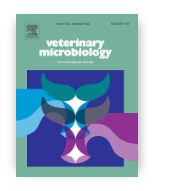 Twelve Staphylococcus borealis strains, isolated in Canada and Poland from milk of cows with intramammary infections, were characterized phenotypically (biochemical reactions on ID 32 STAPH and Biolog Phenotype MicroArrays™ PM1 and PM2A, ability of biofilm production) and genotypically (random amplified polymorphic DNA). In addition, a genomic comparison was done with S. borealis strains of human and porcine origin using the multilocus sequence typing (MLST) technique. The bovine isolates showed a high degree of phenotypic and genotypic diversity, however, they could be differentiated from human strains by the negative test for urease (found in all but one bovine isolate examined with ID 32 STAPH) and positive reaction for D-galactose (on Biolog phenotype microarray PM1) and D-lactose (on both commercial systems). The MLST method, utilizing six concatenated genes of the total length of ∼2930 bp, revealed that bovine strains (irrespective of the country of origin) show a distinctly greater degree of mutual relationship than to the strains of human and porcine origin, suggesting that S. borealis has evolved independently in these hosts. In conclusion, bovine-specific S. borealis can be involved in intramammary infections in cattle.
Twelve Staphylococcus borealis strains, isolated in Canada and Poland from milk of cows with intramammary infections, were characterized phenotypically (biochemical reactions on ID 32 STAPH and Biolog Phenotype MicroArrays™ PM1 and PM2A, ability of biofilm production) and genotypically (random amplified polymorphic DNA). In addition, a genomic comparison was done with S. borealis strains of human and porcine origin using the multilocus sequence typing (MLST) technique. The bovine isolates showed a high degree of phenotypic and genotypic diversity, however, they could be differentiated from human strains by the negative test for urease (found in all but one bovine isolate examined with ID 32 STAPH) and positive reaction for D-galactose (on Biolog phenotype microarray PM1) and D-lactose (on both commercial systems). The MLST method, utilizing six concatenated genes of the total length of ∼2930 bp, revealed that bovine strains (irrespective of the country of origin) show a distinctly greater degree of mutual relationship than to the strains of human and porcine origin, suggesting that S. borealis has evolved independently in these hosts. In conclusion, bovine-specific S. borealis can be involved in intramammary infections in cattle.
DOI:10.1016/j.vetmic.2023.109876
Green manufacturing facilities – Meeting CO2 emission targets considering power and heat supply
Muhammad Shahzas Javed; Jakub Jurasz; Paweł Dąbek; Tao Ma; Piotr Jadwiszczak; Elżbieta Niemierka
Applied Energy
Ministerial score = 200.0
Journal Impact Factor (2023) = 11.2 (Q1)
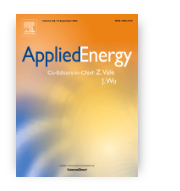 To achieve carbon neutrality in the industrial sector, variable low-carbon and low-cost electricity sources, together with a variety of storage technologies, maybe the only viable path. Here, we investigate the diverse scenarios for manufacturing facilities (MF) under different emission reduction targets to determine the least-cost decarbonization pathway. This study developed a multi-energy model to assess emission reduction versus cost ratio and gave a technology roadmap for MF, i.e., cost-effectiveness of each technology at a given decarbonization level. We optimized the dispatch of each scenario with the least cost objective and step-wise reduced the emissions of selected exemplar European MF from current levels until the solution came out as infeasible due to the lifecycle emissions of considered technologies. Results showed that electrical boiler became key technology from 10% emission reduction target (ERT), while battery storage is cost-effective for medium ERT and H2 facility remains a critical part of achieving deep decarbonization targets (>80%). This analysis reveals a basic understanding of a given technology's economic viability to target a certain decarbonization goal and would help guide MF that are more inclined to invest in having their green energy distributed system. Sensitivity analysis of key parameter values (i.e., grid electricity/gas prices, technology costs) reveals that the H2 facility will play a critical role in deep decarbonization and high gas prices made the expensive heat pumps cost-effective in all scenarios. Furthermore, the future costs of electrolyzer, fuel cell, heat pump, and battery storage will decide the technological transformation speed for the industrial sector.
To achieve carbon neutrality in the industrial sector, variable low-carbon and low-cost electricity sources, together with a variety of storage technologies, maybe the only viable path. Here, we investigate the diverse scenarios for manufacturing facilities (MF) under different emission reduction targets to determine the least-cost decarbonization pathway. This study developed a multi-energy model to assess emission reduction versus cost ratio and gave a technology roadmap for MF, i.e., cost-effectiveness of each technology at a given decarbonization level. We optimized the dispatch of each scenario with the least cost objective and step-wise reduced the emissions of selected exemplar European MF from current levels until the solution came out as infeasible due to the lifecycle emissions of considered technologies. Results showed that electrical boiler became key technology from 10% emission reduction target (ERT), while battery storage is cost-effective for medium ERT and H2 facility remains a critical part of achieving deep decarbonization targets (>80%). This analysis reveals a basic understanding of a given technology's economic viability to target a certain decarbonization goal and would help guide MF that are more inclined to invest in having their green energy distributed system. Sensitivity analysis of key parameter values (i.e., grid electricity/gas prices, technology costs) reveals that the H2 facility will play a critical role in deep decarbonization and high gas prices made the expensive heat pumps cost-effective in all scenarios. Furthermore, the future costs of electrolyzer, fuel cell, heat pump, and battery storage will decide the technological transformation speed for the industrial sector.
DOI:10.1016/j.apenergy.2023.121707
Optimization of hydrodynamic degumming of flax fiber for improved biochemical profile
Wioleta Wojtasik; Katarzyna Majewska; Lucyna Dymińska; Jerzy Hanuza; Małgorzata Zimniewska; Marta Preisner; Jan Szopa; Magdalena Wróbel-Kwiatkowska
Industrial Crops and Products
Ministerial score = 200.0
Journal Impact Factor (2023) = 5.9 (Q1)
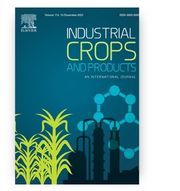 Flax fibers have bioactive properties due to their biochemical composition. The quality of the fibers is the main parameter that determines the application, and the process of obtaining fibers has a crucial impact on the composition and properties of fibers. Therefore, this study aimed to enhance the quality of flax fibers by optimizing the hydrodynamic degumming process of decorticated flax fibers. Flax fibers, both non-transgenic (Nike) and transgenic (B14) fibers with overexpression of the β-1,3-glucanase gene from potato, were obtained through nine processes that varied in the degumming temperature, degumming time, and rinsing temperature. The content of phenolic, terpene and polyamine compounds as well as antioxidant activity was determined in the fibers. Two processes, due to having the highest content of bioactive compounds, were selected for further analyses: determination of the chemical composition and structure of plant cell walls, and in vitro tests on the culture of the V79 hamster lung fibroblast cell line. Both processes led to an increase in the content of cellulose and hemicellulose, along with a decrease in the amount of pectin in B14 fibers, indicating changes in the structure of the cell wall. Water extract containing phenolic compounds obtained from flax fiber resulted in increased viability of the V79 fibroblasts and did not show changes in the level of transcripts of inflammatory genes. Based on the obtained results, process VI was identified as the most effective for obtaining flax fibers of the best quality. Additionally, the study confirmed that transgenic B14 fibers exhibited better quality than non-transgenic fibers. The findings highlight the potential of the methods used to obtain flax fibers, which may significantly impact their properties.
Flax fibers have bioactive properties due to their biochemical composition. The quality of the fibers is the main parameter that determines the application, and the process of obtaining fibers has a crucial impact on the composition and properties of fibers. Therefore, this study aimed to enhance the quality of flax fibers by optimizing the hydrodynamic degumming process of decorticated flax fibers. Flax fibers, both non-transgenic (Nike) and transgenic (B14) fibers with overexpression of the β-1,3-glucanase gene from potato, were obtained through nine processes that varied in the degumming temperature, degumming time, and rinsing temperature. The content of phenolic, terpene and polyamine compounds as well as antioxidant activity was determined in the fibers. Two processes, due to having the highest content of bioactive compounds, were selected for further analyses: determination of the chemical composition and structure of plant cell walls, and in vitro tests on the culture of the V79 hamster lung fibroblast cell line. Both processes led to an increase in the content of cellulose and hemicellulose, along with a decrease in the amount of pectin in B14 fibers, indicating changes in the structure of the cell wall. Water extract containing phenolic compounds obtained from flax fiber resulted in increased viability of the V79 fibroblasts and did not show changes in the level of transcripts of inflammatory genes. Based on the obtained results, process VI was identified as the most effective for obtaining flax fibers of the best quality. Additionally, the study confirmed that transgenic B14 fibers exhibited better quality than non-transgenic fibers. The findings highlight the potential of the methods used to obtain flax fibers, which may significantly impact their properties.
DOI:10.1016/j.indcrop.2023.117621
Profiling of the Helicobacter pylori redox switch HP1021 regulon using a multi-omics approach
Mateusz Noszka; Agnieszka Strzałka; Jakub Muraszko; Rafał Kolenda; Chen Meng; Christina Ludwig; Kerstin Stingl; Anna Zawilak-Pawlik
Nature Communications
Ministerial score = 200.0
Journal Impact Factor (2023) = 16.6 (Q1)
 The gastric human pathogen Helicobacter pylori has developed mechanisms to combat stress factors, including reactive oxygen species (ROS). Here, we present a comprehensive study on the redox switch protein HP1021 regulon combining transcriptomic, proteomic and DNA-protein interactions analyses. Our results indicate that HP1021 modulates H. pylori’s response to oxidative stress. HP1021 controls the transcription of 497 genes, including 407 genes related to response to oxidative stress. 79 proteins are differently expressed in the HP1021 deletion mutant. HP1021 controls typical ROS response pathways (katA, rocF) and less canonical ones, particularly DNA uptake and central carbohydrate metabolism. HP1021 is a molecular regulator of competence in H. pylori, as HP1021-dependent repression of the comB DNA uptake genes is relieved under oxidative conditions, increasing natural competence. Furthermore, HP1021 controls glucose consumption by directly regulating the gluP transporter and has an important impact on maintaining the energetic balance in the cell.
The gastric human pathogen Helicobacter pylori has developed mechanisms to combat stress factors, including reactive oxygen species (ROS). Here, we present a comprehensive study on the redox switch protein HP1021 regulon combining transcriptomic, proteomic and DNA-protein interactions analyses. Our results indicate that HP1021 modulates H. pylori’s response to oxidative stress. HP1021 controls the transcription of 497 genes, including 407 genes related to response to oxidative stress. 79 proteins are differently expressed in the HP1021 deletion mutant. HP1021 controls typical ROS response pathways (katA, rocF) and less canonical ones, particularly DNA uptake and central carbohydrate metabolism. HP1021 is a molecular regulator of competence in H. pylori, as HP1021-dependent repression of the comB DNA uptake genes is relieved under oxidative conditions, increasing natural competence. Furthermore, HP1021 controls glucose consumption by directly regulating the gluP transporter and has an important impact on maintaining the energetic balance in the cell.
DOI:10.1038/s41467-023-42364-6
Golden Standard: a complete standard, portable, and interoperative MoClo tool for model and non-model proteobacteria
Blas Blázquez; David San León; Jesús Torres-Bacete; Álvaro Gómez-Luengo; Ryan Kniewel; Igor Martinez; Sandra Sordon; Aleksandra Wilczak; Sergio Salgado; Ewa Huszcza; Jarosław Popłoński; Auxiliadora Prieto; Juan Nogales
Nucleic Acids Research
Ministerial score = 200.0
Journal Impact Factor (2023) = 14.9 (Q1)
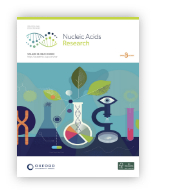 Modular cloning has become a benchmark technology in synthetic biology. However, a notable disparity exists between its remarkable development and the need for standardization to facilitate seamless interoperability among systems. The field is thus impeded by an overwhelming proliferation of organism-specific systems that frequently lack compatibility. To overcome these issues, we present Golden Standard (GS), a Type IIS assembly method underpinned by the Standard European Vector Architecture. GS unlocks modular cloning applications for most bacteria, and delivers combinatorial multi-part assembly to create genetic circuits of up to twenty transcription units (TUs). Reliance on MoClo syntax renders GS fully compatible with many existing tools and it sets the path towards efficient reusability of available part libraries and assembled TUs. GS was validated in terms of DNA assembly, portability, interoperability and phenotype engineering in α-, β-, γ- and δ-proteobacteria. Furthermore, we provide a computational pipeline for parts characterization that was used to assess the performance of GS parts. To promote community-driven development of GS, we provide a dedicated web-portal including a repository of parts, vectors, and Wizard and Setup tools that guide users in designing constructs. Overall, GS establishes an open, standardized framework propelling the progress of synthetic biology as a whole.
Modular cloning has become a benchmark technology in synthetic biology. However, a notable disparity exists between its remarkable development and the need for standardization to facilitate seamless interoperability among systems. The field is thus impeded by an overwhelming proliferation of organism-specific systems that frequently lack compatibility. To overcome these issues, we present Golden Standard (GS), a Type IIS assembly method underpinned by the Standard European Vector Architecture. GS unlocks modular cloning applications for most bacteria, and delivers combinatorial multi-part assembly to create genetic circuits of up to twenty transcription units (TUs). Reliance on MoClo syntax renders GS fully compatible with many existing tools and it sets the path towards efficient reusability of available part libraries and assembled TUs. GS was validated in terms of DNA assembly, portability, interoperability and phenotype engineering in α-, β-, γ- and δ-proteobacteria. Furthermore, we provide a computational pipeline for parts characterization that was used to assess the performance of GS parts. To promote community-driven development of GS, we provide a dedicated web-portal including a repository of parts, vectors, and Wizard and Setup tools that guide users in designing constructs. Overall, GS establishes an open, standardized framework propelling the progress of synthetic biology as a whole.
DOI:10.1093/nar/gkad758

